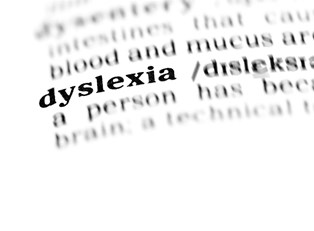Dyslexia is a common learning disorder that is usually inherited and affects the way the brain interprets language. Those with dyslexia struggle with reading due to difficulty processing and understanding symbols. Drugs or medication therapy is generally not used to treat dyslexia. There are, however, several learning techniques and strategies used to enable those with the disorder to use language more effectively. While there are several educational methods for treating dyslexia, the following are some of the more prominent strategies currently being used.
Applying a Multi-Sensory Approach
A multi-sensory approach means using a variety of instructional methods that employ sight, sound, and touch. This strategy includes using audio books along with reading to help a child with dyslexia. Hearing the words read out loud may help the child better comprehend and understand the material being read. This could include reading to your child or having the child read out loud. Older students may need to record lectures at the high school and college level. Younger children who trace letters and words with their fingers may better understand the written word through tactile stimulation. Fun activities and games can also be included as part of a multi-sensory approach.
Using Various Materials
It may be effective to provide large-print books with extra spacing between the words. Using different colors on a chalkboard or even when writing in a tablet can help a dyslexic student process and understand what is written. It's also recommended to use paper that has lines. For younger children, using blocks or solid objects with numbers and letters on them may help them learn to count and memorize the alphabet. Using shapes and blocks can also be used for other subjects such as math.
Teaching Phonemic Awareness
Since those with dyslexia tend to see words as whole chunks and have trouble distinguishing separate sounds, many experts agree that phonics instruction should play a regular role in helping these students learn to read. General phonics instruction, however, must be modified to specifically meet the individual needs of each student. There are 44 phonemes, or speech sounds, in the English language. It may be best for some students to learn the simplest sounds first. Using phonics in rhymes could be another way to strengthen word skills. While not all experts agree, some studies have suggested that interactive phonics may help rewire the brains of some people with dyslexia.
Structuring Instruction
If your child is struggling with dyslexia, instruction should be structured and organized. This means teaching in small steps and building logically on what has already been taught. Children should be taught simplest skills first. These skills should be reviewed before adding new skills. These types of skills should be transferable and able to be used in a variety of areas.



